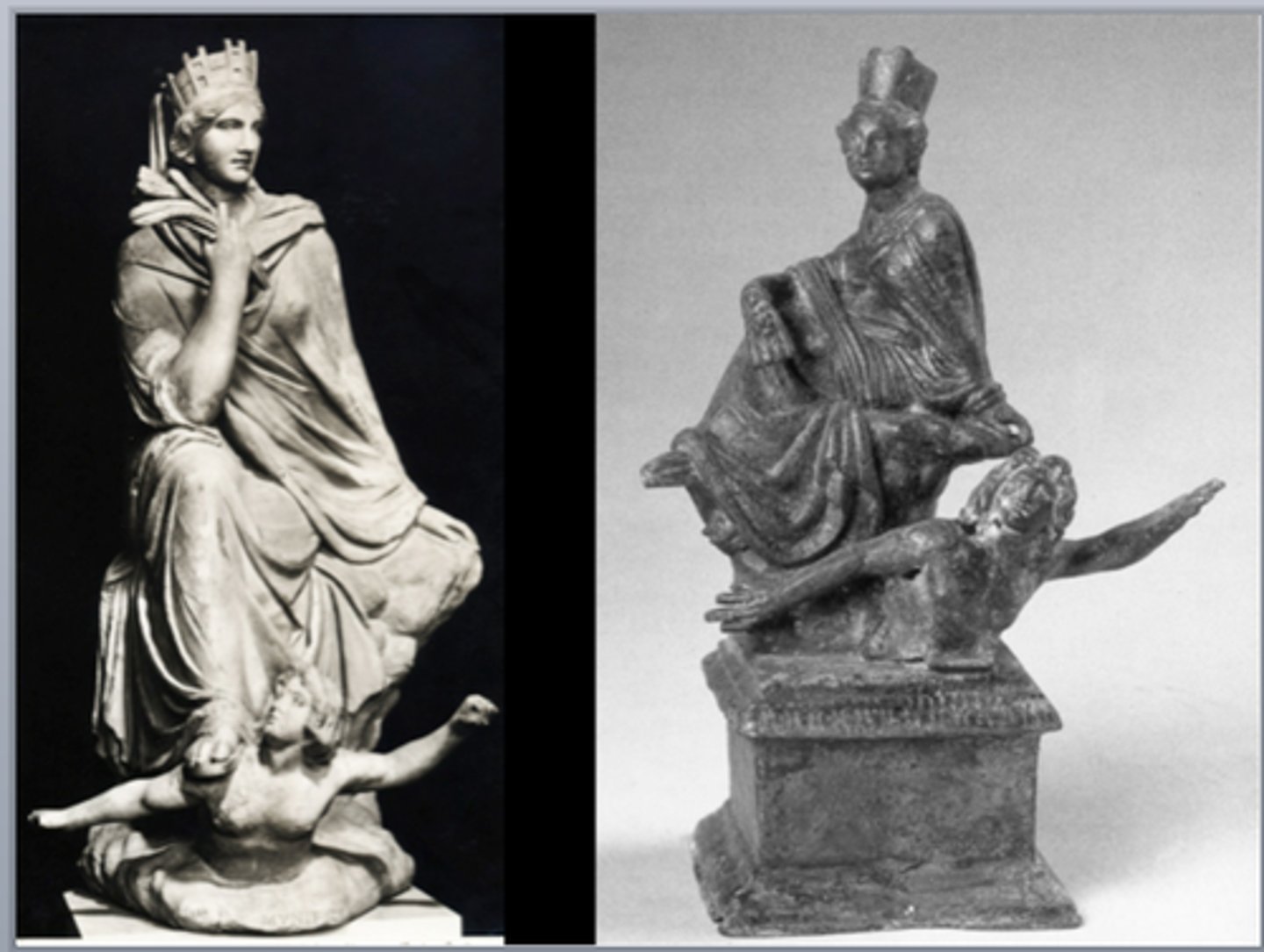art hist identifications - hellenistic period
1/24
There's no tags or description
Looks like no tags are added yet.
Name | Mastery | Learn | Test | Matching | Spaced |
|---|
No study sessions yet.
25 Terms
Great Altar of Zeus from Pergamon
- 180-150 bce (high hellenistic pd)
- from pergamon/pergamum (asia minor)
- built by King Emends II
- built to mark successful victory over Gaul revolt; made to thank Zeus for victory
- reminiscent of Athenian Acropolis
- Ionic colonnade surrounded by friezes
- center has sacrificial altar
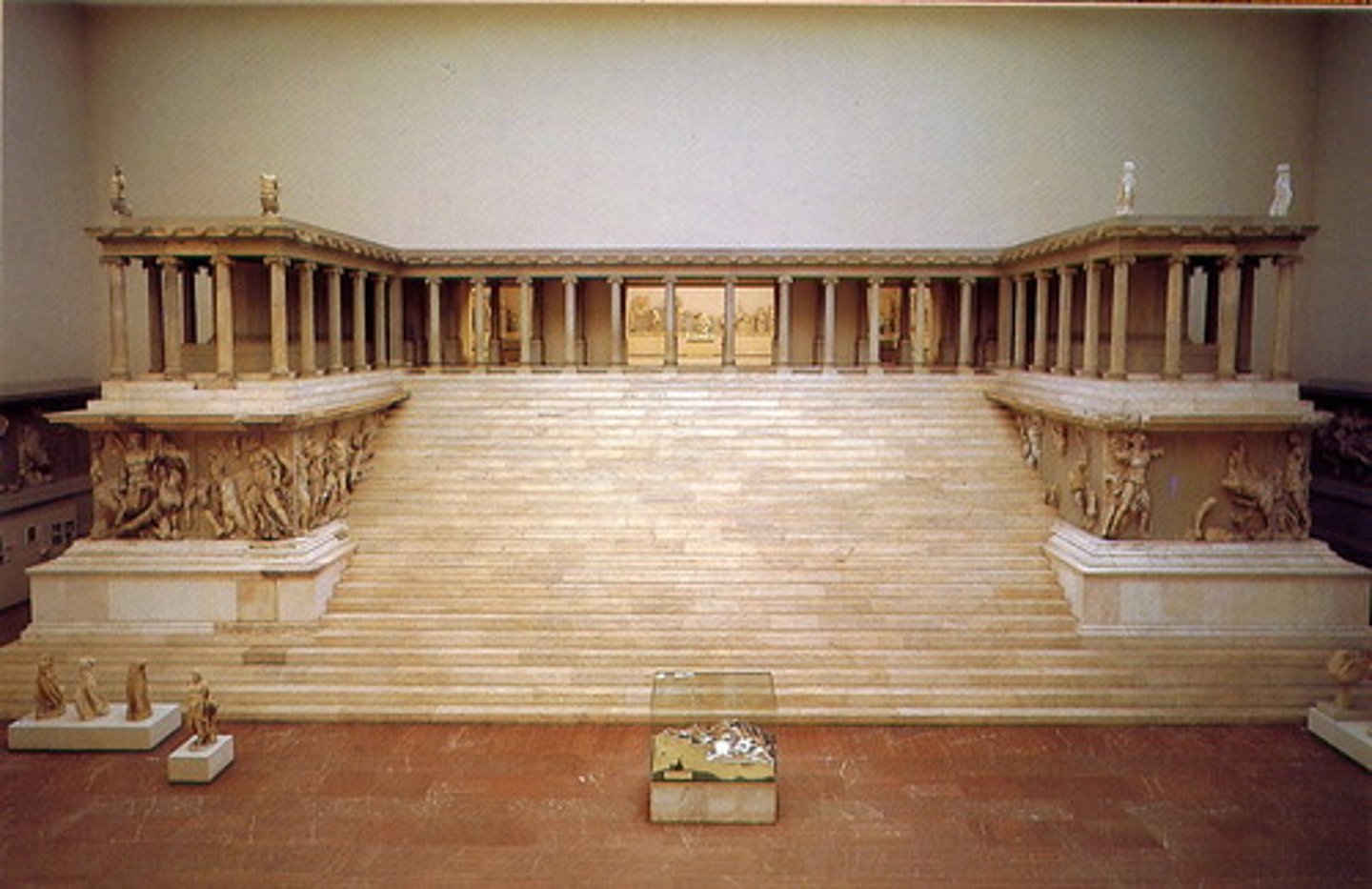
Gigantomachy Frieze
- 180-150 bce (high hellenistic pd)
- from great altar of zeus from pergamon (asia minor)
- nearly 200 figures
- depicts fights between gods (athena, zeus) and giants; figures with wings denote nikes (shows victory)
- faces show pathos/strong feelings of emotion (new feature)
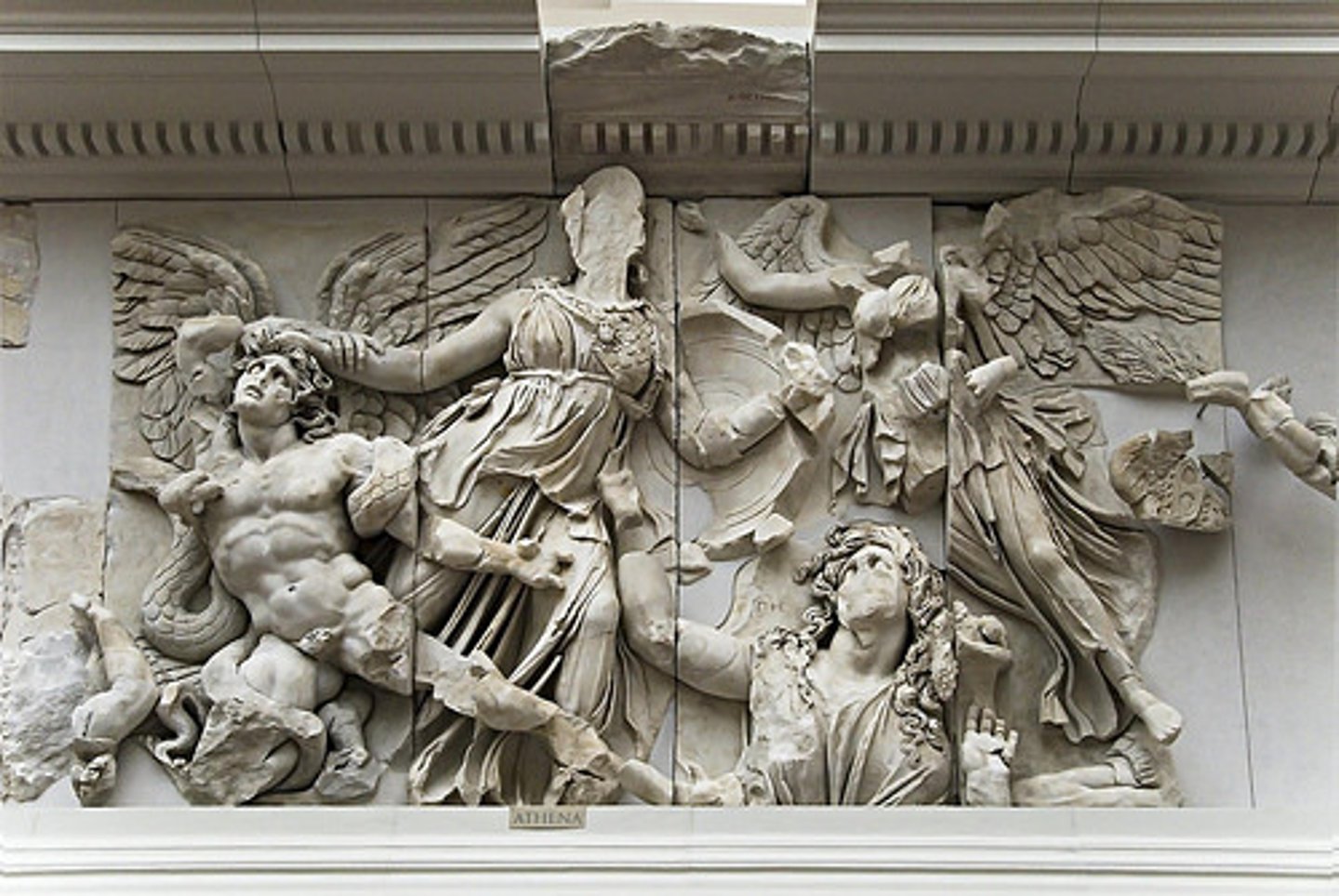
Laocoon
- 3rd-1st cent. bce (debated due to discovery of figures from a cave at Sperlonga, which confuses chronology)
- by hagesandros, athanadoros, and polydoros
- from rome (italy)
- depicts Laocoon and his two sons getting attacked by snakes (called on by poseidon since Laocoon was going to warn Troy about the Trojan Horse)

Gaul Ludovisi
- 220 bce (high hellenistic pd)
- from Pergamon (where victory was against Gauls)
- made by Epigonus
- "dying gaul" (Gaul denoted by mustache)
- roman copy; part of bigger group of dedications known as the Large Gauls (included Gaul and his wife)
- man is trumpeter (broken trumpet on ground)
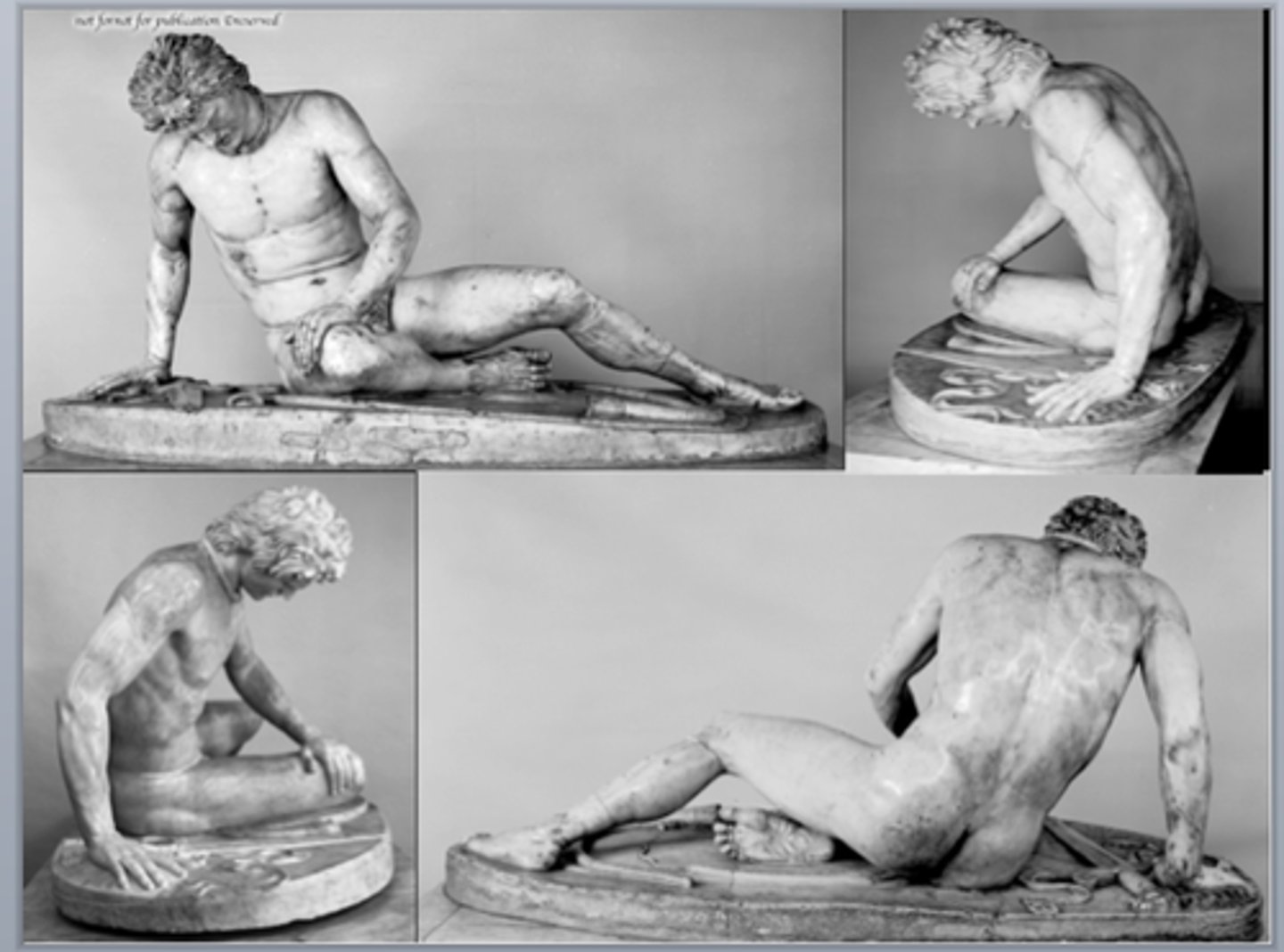
Gaul and his Wife
- 220 bce (high hellenistic pd)
- from Pergamon (where victory was against Gauls)
- made by Epigonus
- depicts Gaul man (mustache) killing himself after killing his wife to prevent her from becoming a slave
- roman copy of bronze original
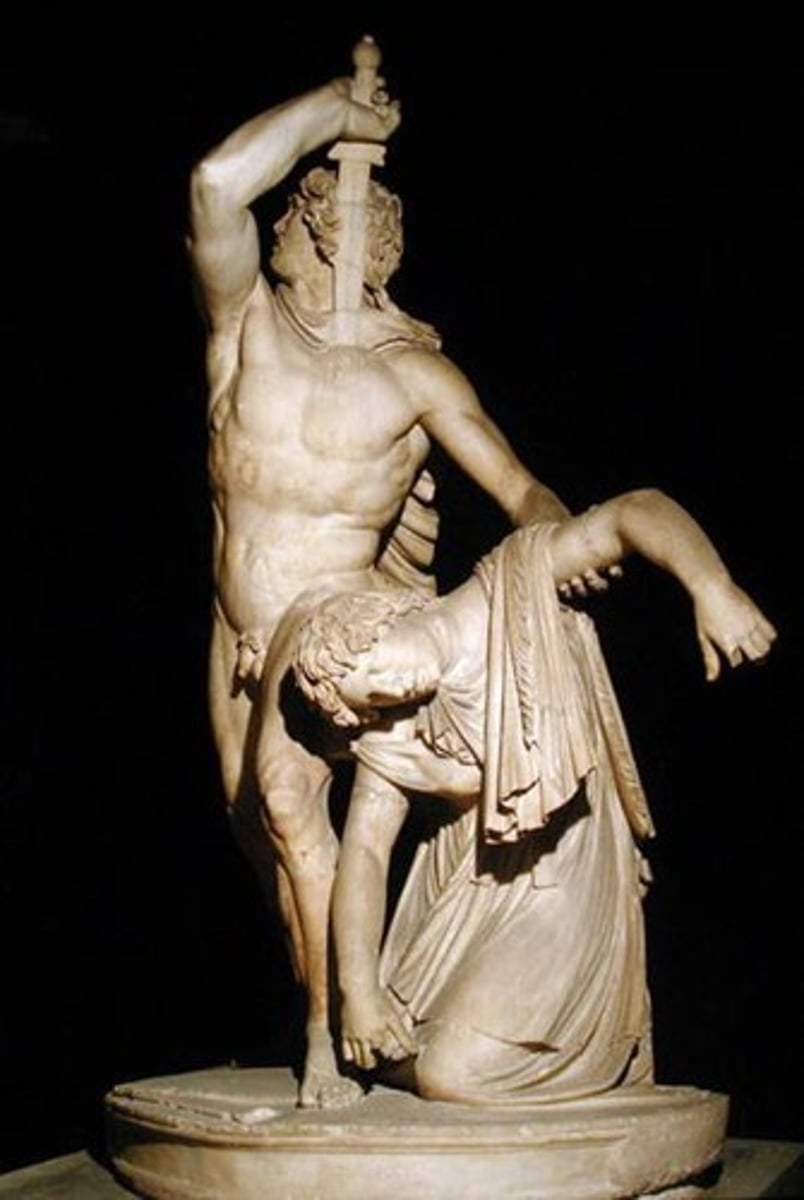
Votive offering for Victory over the Gauls
- 150 bce (high/late hellenistic pd)
- from acropolis (athens)
- pergamene king attalos II dedicated votive offering at acropolis celebrating the victory over the Gauls

Nike of Samothrace
- late 3rd-early 2nd cent bce (high hellenistic pd)
- from samothrace
- by Pythokritos
- depicts nike landing from flight, wings still outstretched
- likely a ship battle due to her landing on a ship
- back is poor quality, not meant to be seen from all angles
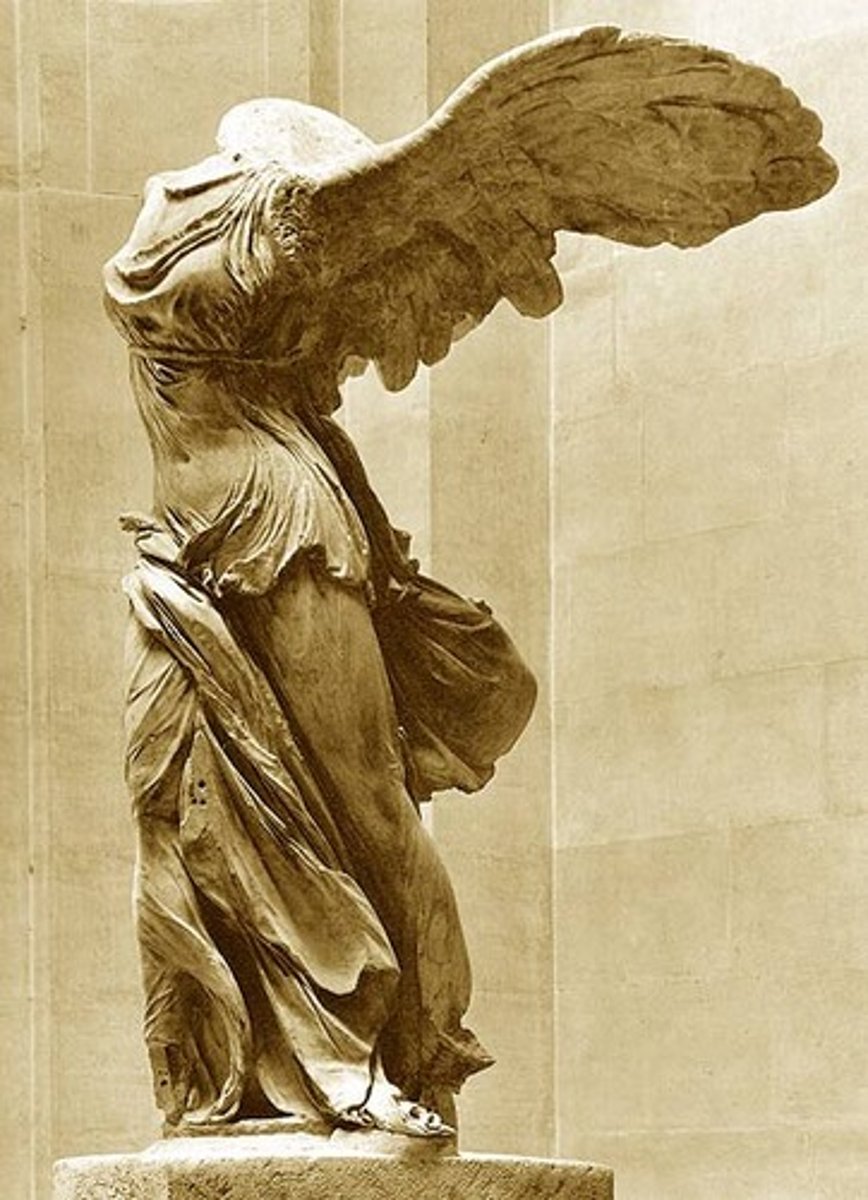
Terme Boxer
- 100-50 bce (late hellenistic pd)
- from rome (Italy)
- found with hellenistic ruler statue
- bronze original
- broken nose, swollen ears, bleeding wounds (debated whether or not he won or lost the fight)
- pose and hair is reminiscent of classical style
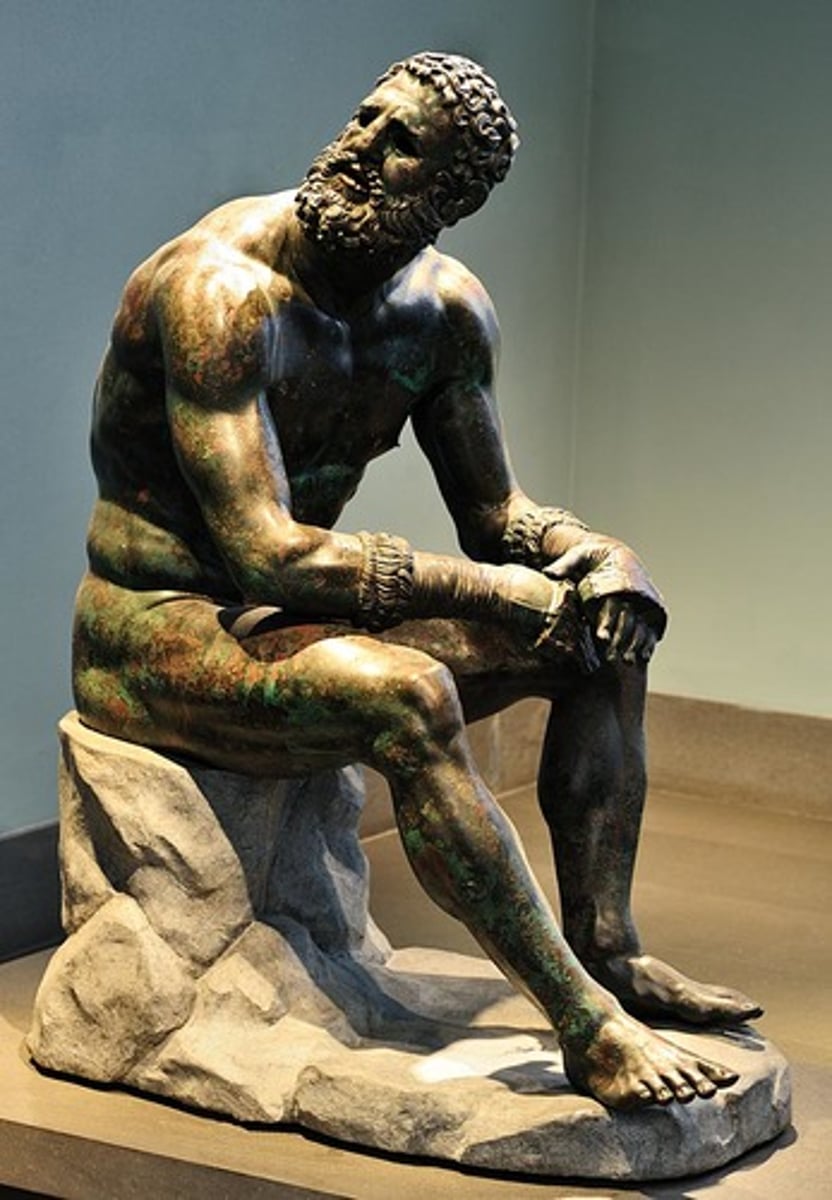
Marsyas's Punishment
- late 2nd cent. bce (high/late hellenistic pd)
- from rome (Italy)
- made of red/purple stone
- depicts Marsyas, a satyr, being hung and skinned because he said he was a better flute player than Apollo
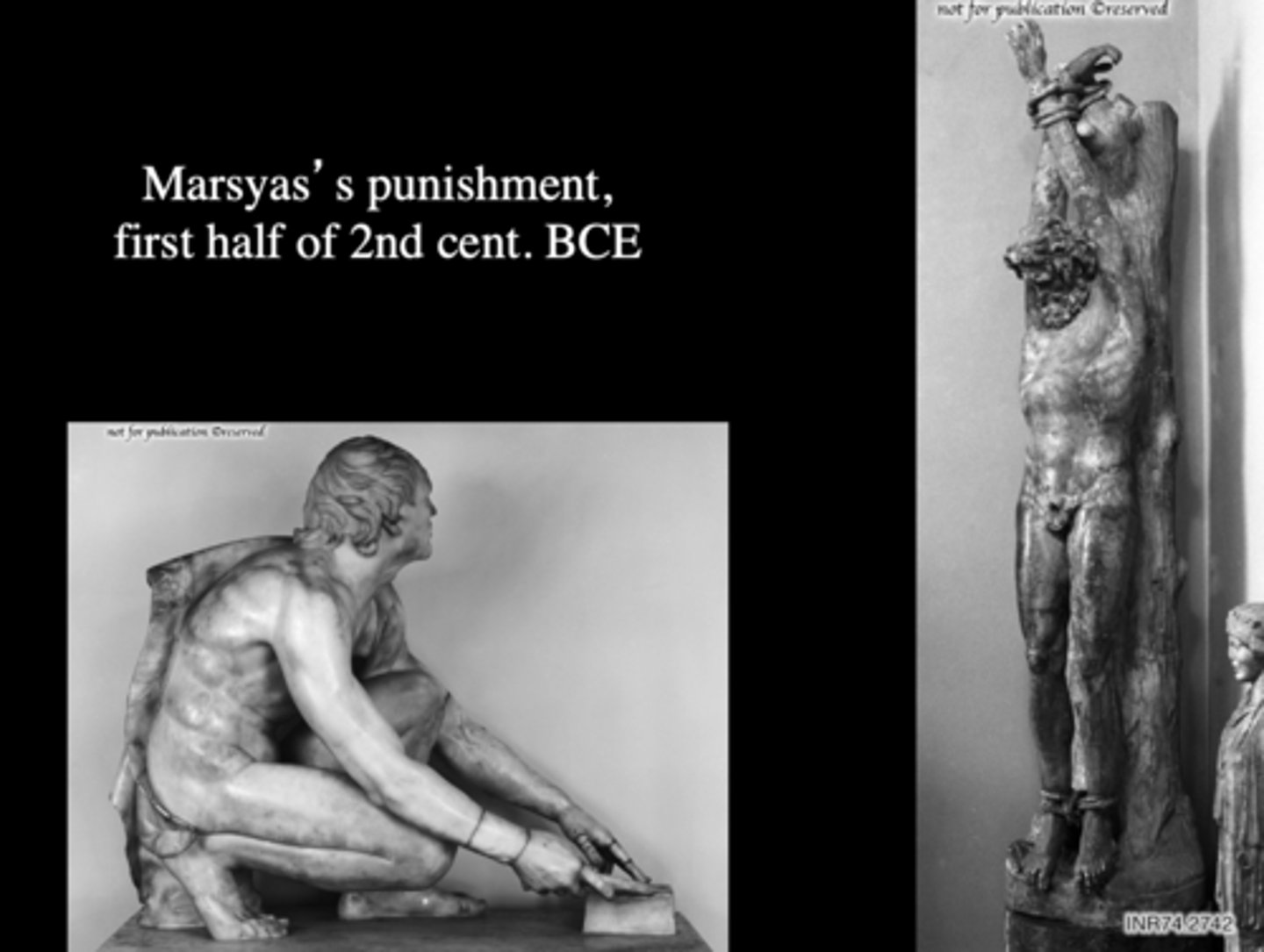
Drunken Old Woman
- 3rd cent bce (early/high hellenistic pd)
- from Smyrna (asia minor)
- made by Myron
- roman copy
- old woman is seated holding a vessel of wine (maybe prostitute??)
- comparison can be made to Dancing Maenad --> maenads are related to Dionysos, god of wine, and woman is drunk
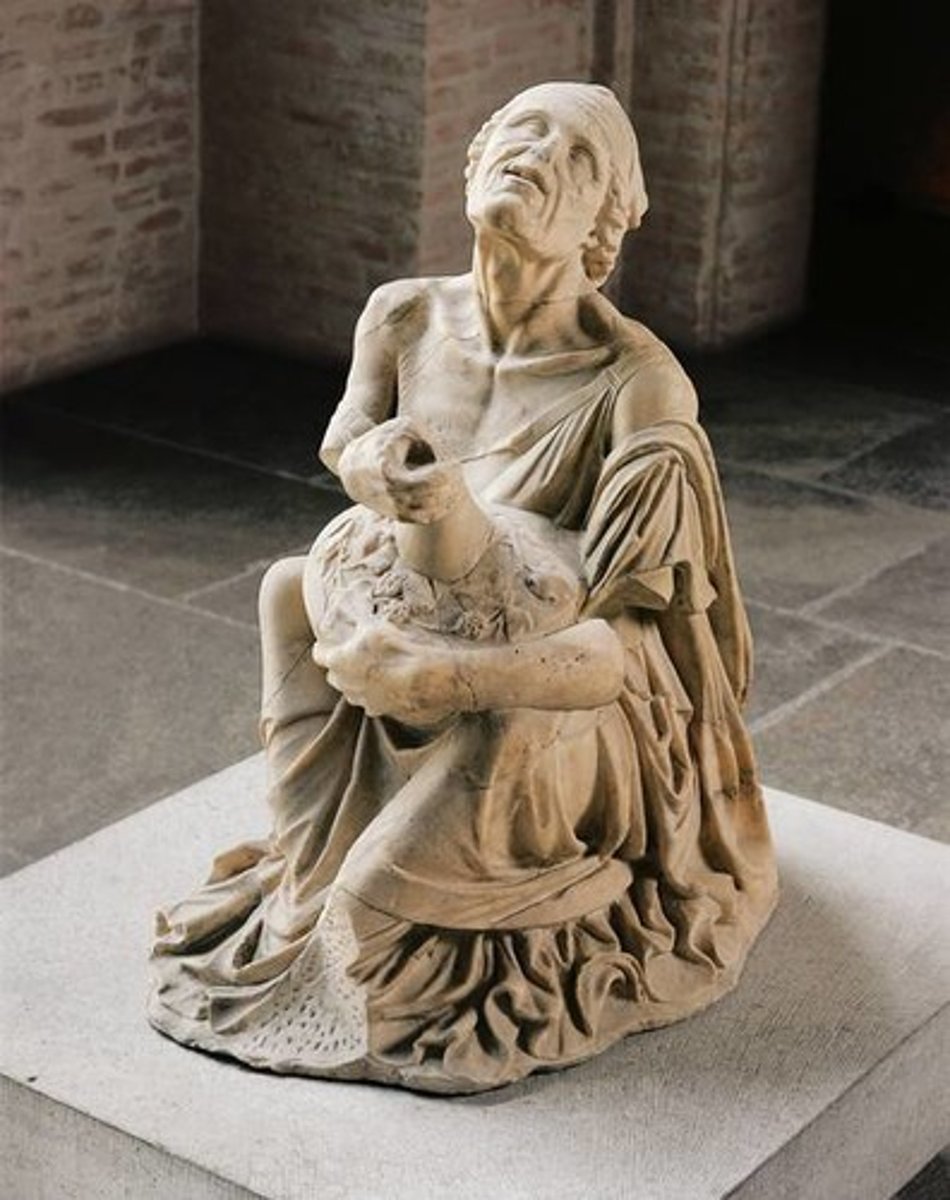
Old Woman
- 2nd cent bce (high/late hellenistic pd)
- from Smyrna (asia minor)
- made by Myron
- woman is likely a merchant; shoulder exposed alludes to sexual undertones, maybe an old prostitute?
- purpose is unknown, votive?? humorous??
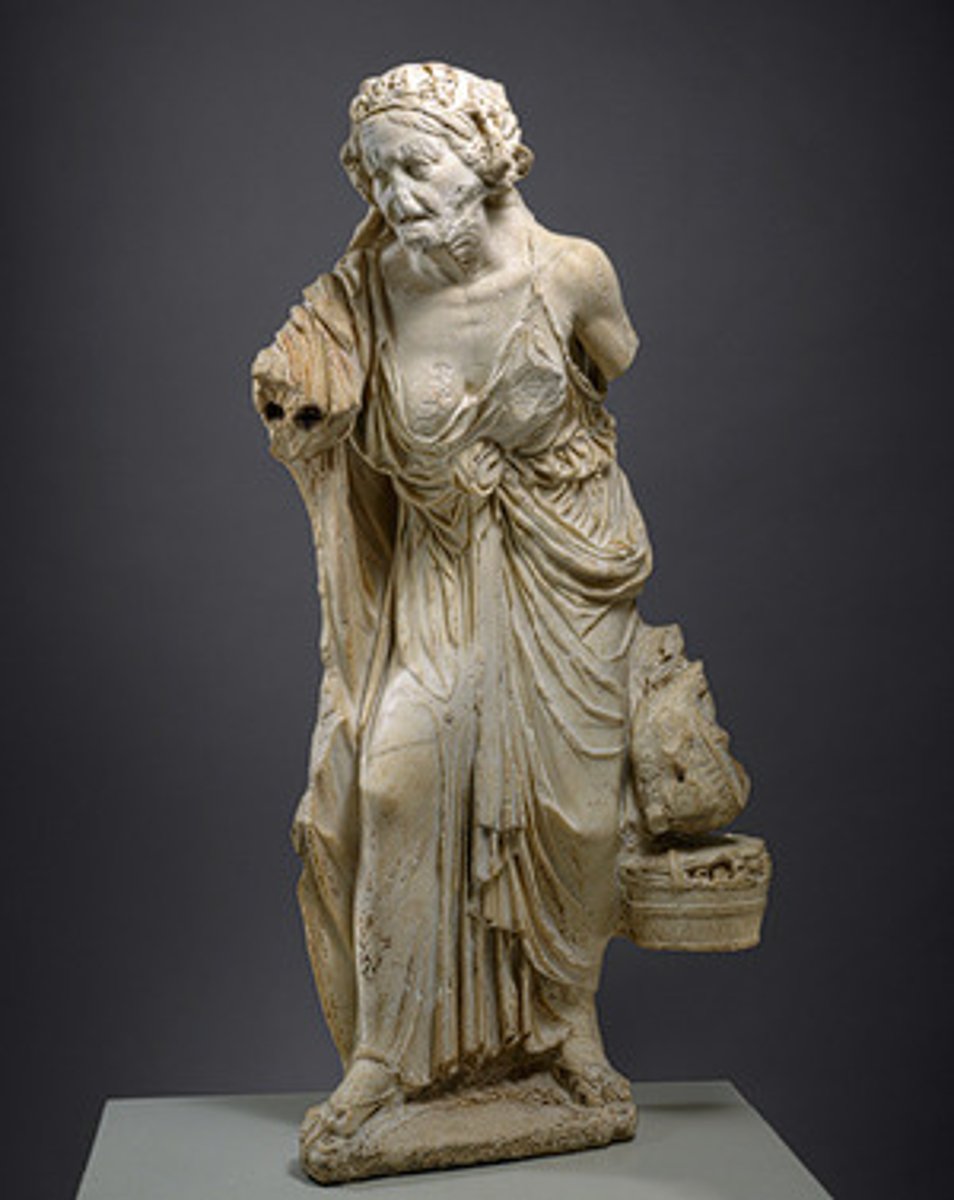
Old Fisherman
- 200 bce (high hellenistic pd)
- from Aphrodisias (Asia Minor)
- depicts an elderly fisherman
- depicting elderly common people became popularized during the hellenistic period

Demosthenes
- 280 bce (early hellenistic pd)
- from Agora in Athens
- by Polyeuktos
- depicts Demosthenes, greek statesman who played lead role in uprising against Alexander the Great

Homer
- 2nd cent bce (high/late hellenistic pd)
- from rome (Italy)
- depicts Homer, blind poet who created the Iliad and the Odyssey
- statue is blind, lack of pupils
- headband and full beard = important figure
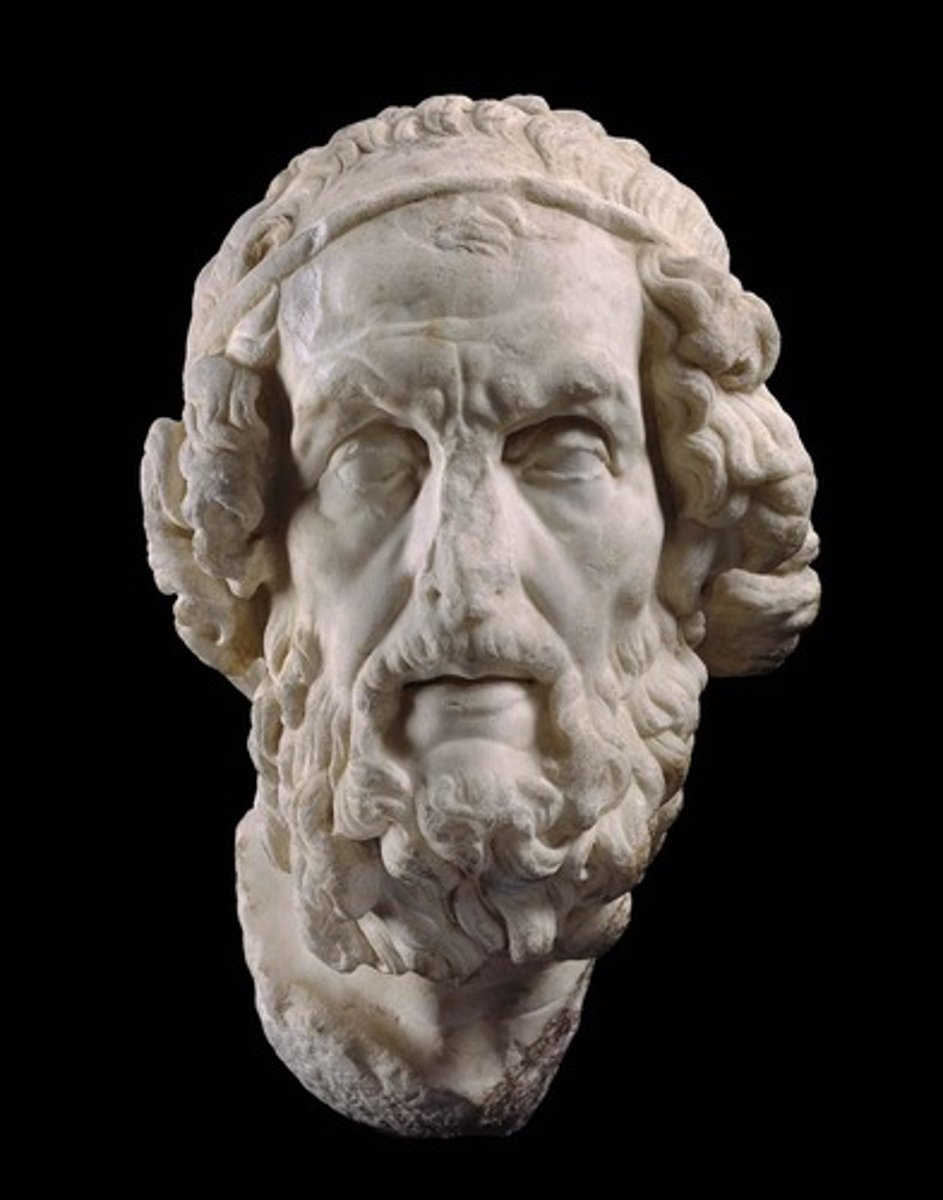
Hellenistic Ruler
- 150 bce (high/late hellenistic pd)
- found in Roman house on the Esquiline (italy)
- bronze original
- depicts young hellenistic ruler with heavy and over-muscular body
- has thin/short beard depicted by carvings in the face
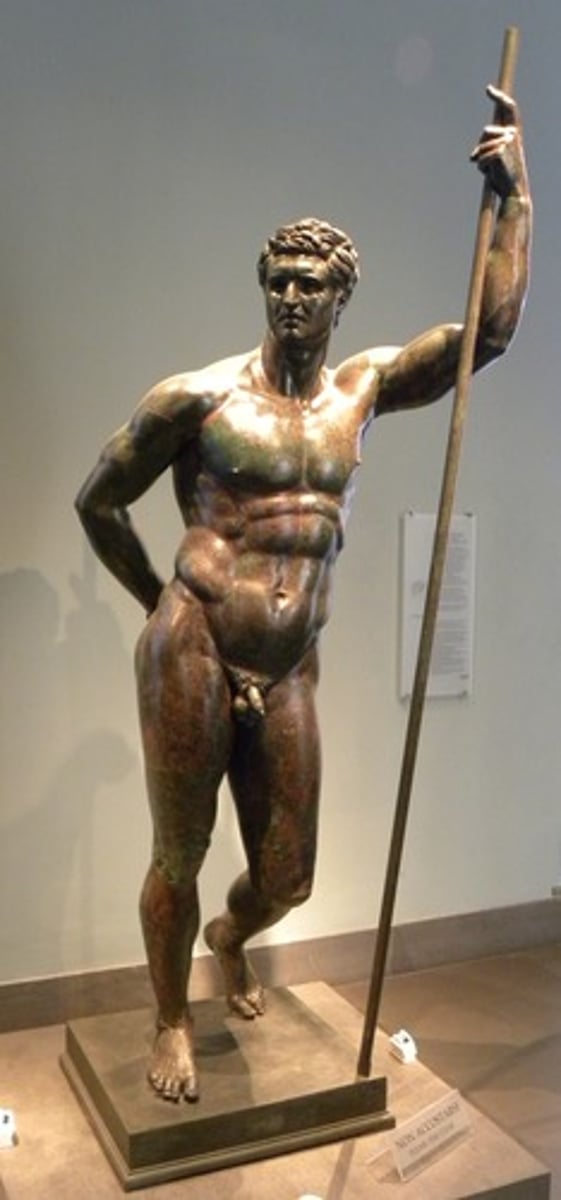
Bronze Boy Jockey
- 200-150 bce (high hellenistic pd)
- recovered from shipwreck off of Cape Artemision, likely headed to Rome
- Boy is depicted as foreigner, therefore small in size compared to the Roman horse
- horse is branded with inscription of Nike crowning victory
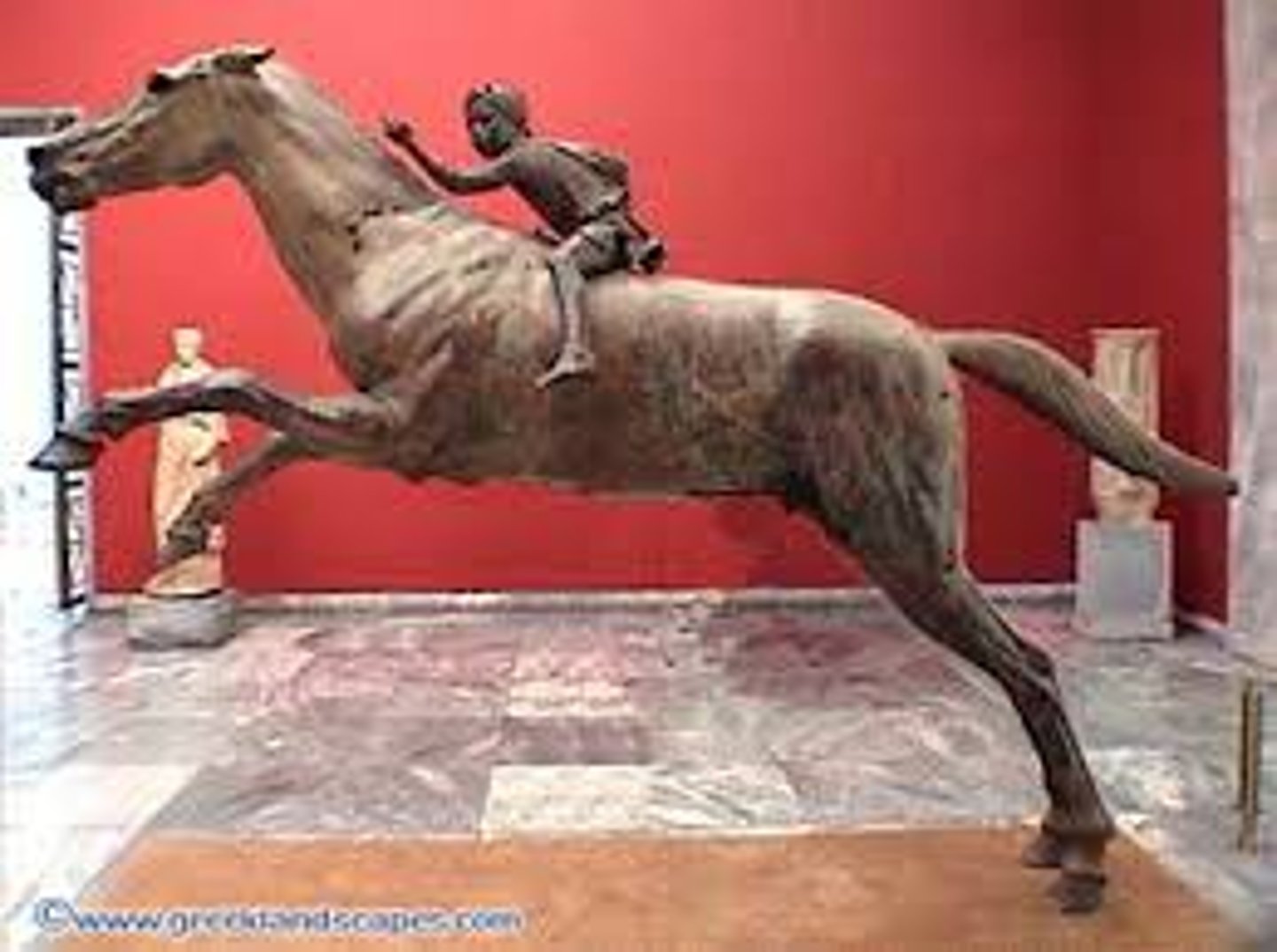
Attic red figure pelike
- 360-350 bce (late classical pd)
- by Marsyas Painter
- from athens???
- depicts peleus, thetis, eros, and nymphs
- interest in fully nude female figures (new)
- white is used to signify nudity (clothed women are depicted in red figure)
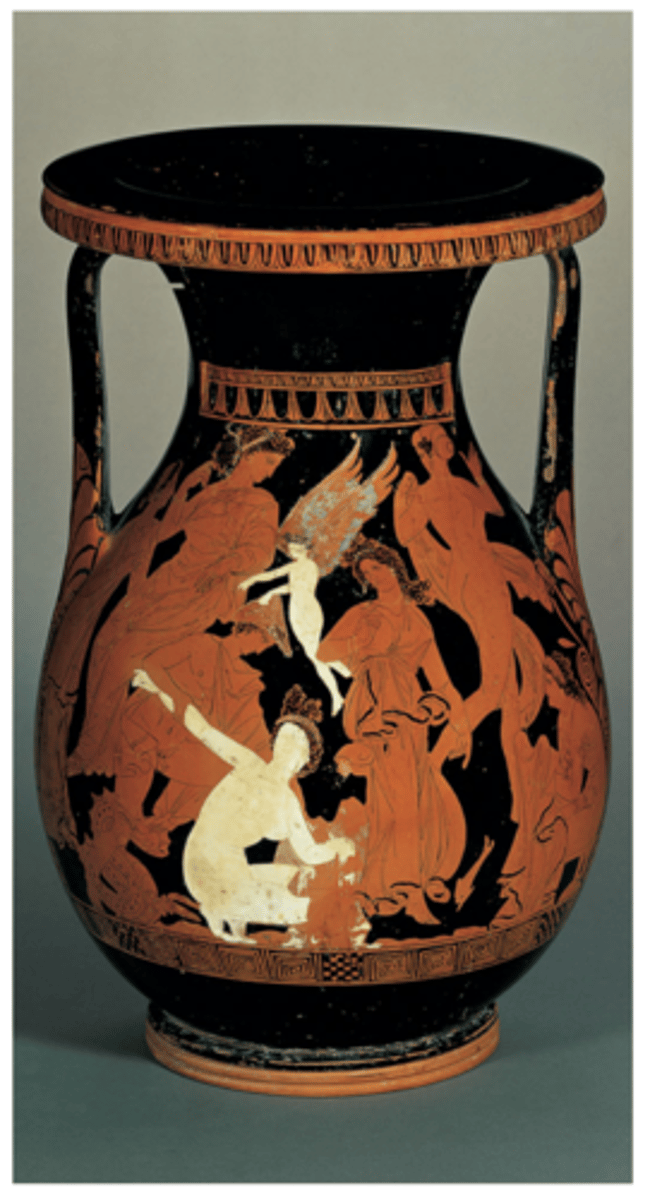
Aphrodite by Doidalsas
- 200-150 bce (high hellenistic pd)
- from Anatolia (asia minor)
- by Doidalsas
- roman copy
- new crouching pose
- aphrodite is surprised at her bath, hence why she is crouched and covering herself
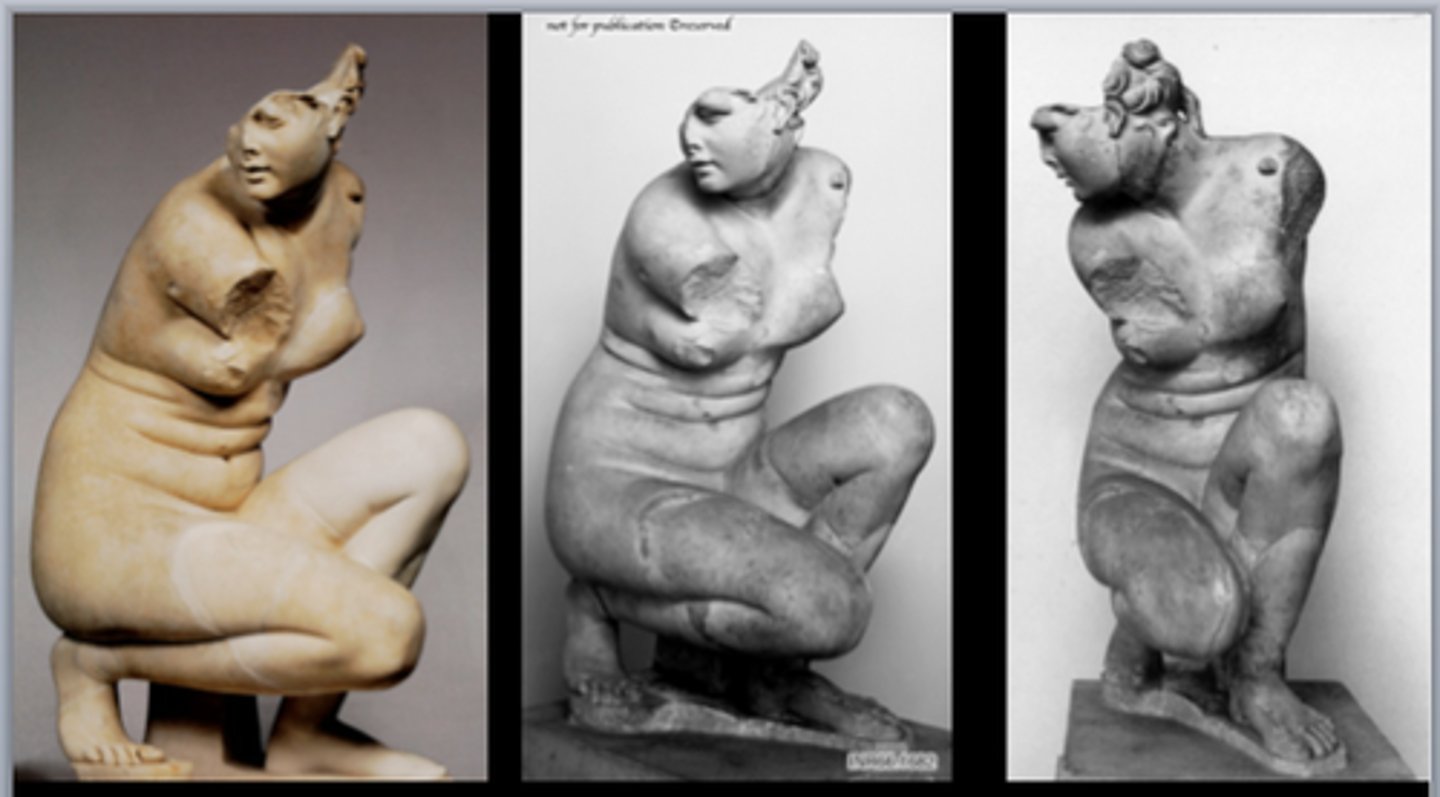
Aphrodite from Melos
- 125-75 bce (late hellenistic pd)
- from Melos (cyclades)
- by Alexandros of Antioch
- depicts praxitelean S-curve; face and anatomy is late classical type
- "venus de milo"
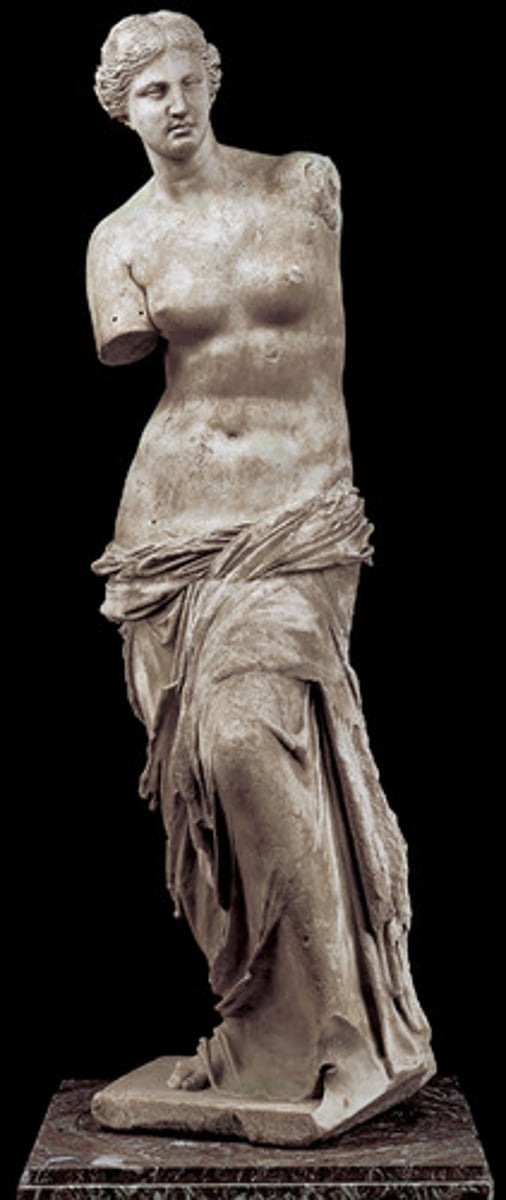
Aphrodite with Slipper from Delos
- 100 bce (late hellenistic pd)
- from clubhouse of the Poseidoniasts of Berytos (Delos)
- by Dionysios of Beryttos
- "slipper-slapper group"
- depicts aphrodite, pan, and eros; nude aphrodite rebuffs an importunate Pan, one hand sheilding genitals while another holds a slipper; Eros is seen between the two playfully pushing Pan away
- mood is good humored and gently erotic
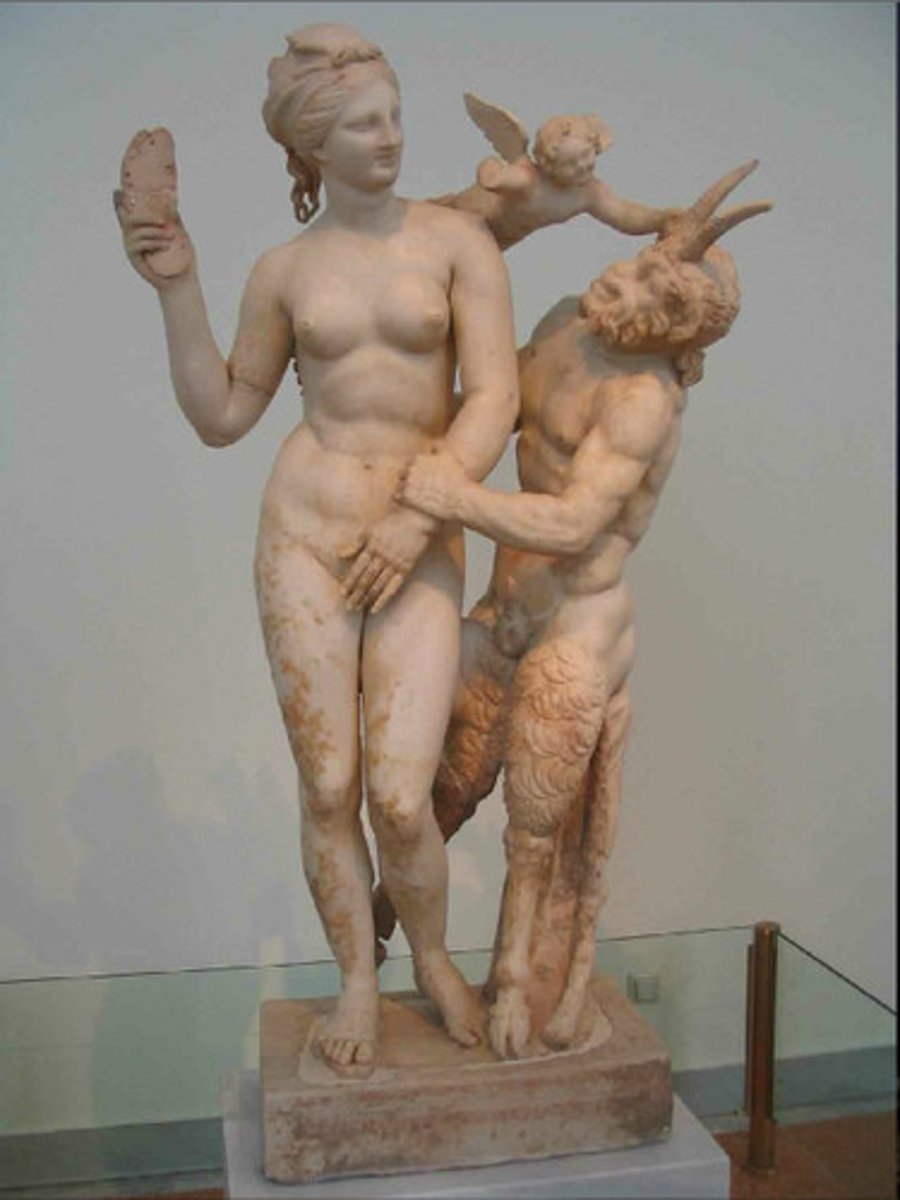
Sleeping Hermaphrodite
- 2nd century BCE (high/late hellenistic pd)
- found in Rome (Italy)
- original sculptor is unknown; Bernini sculpted the mattress the figure lays on in 1600s
- depictions of hermaphrodites was increasingly common in hellenistic period
- you have to look from back side of sculpture to really see that it is a hermaphrodite (common in this period for pieces intended to be viewed from different angles)

Satyr and Hermaphrodite
- 2nd cent bce (high/late hellenistic pd)
- from rome (italy)
- depicts satyr and hermaphrodite in a shuffle
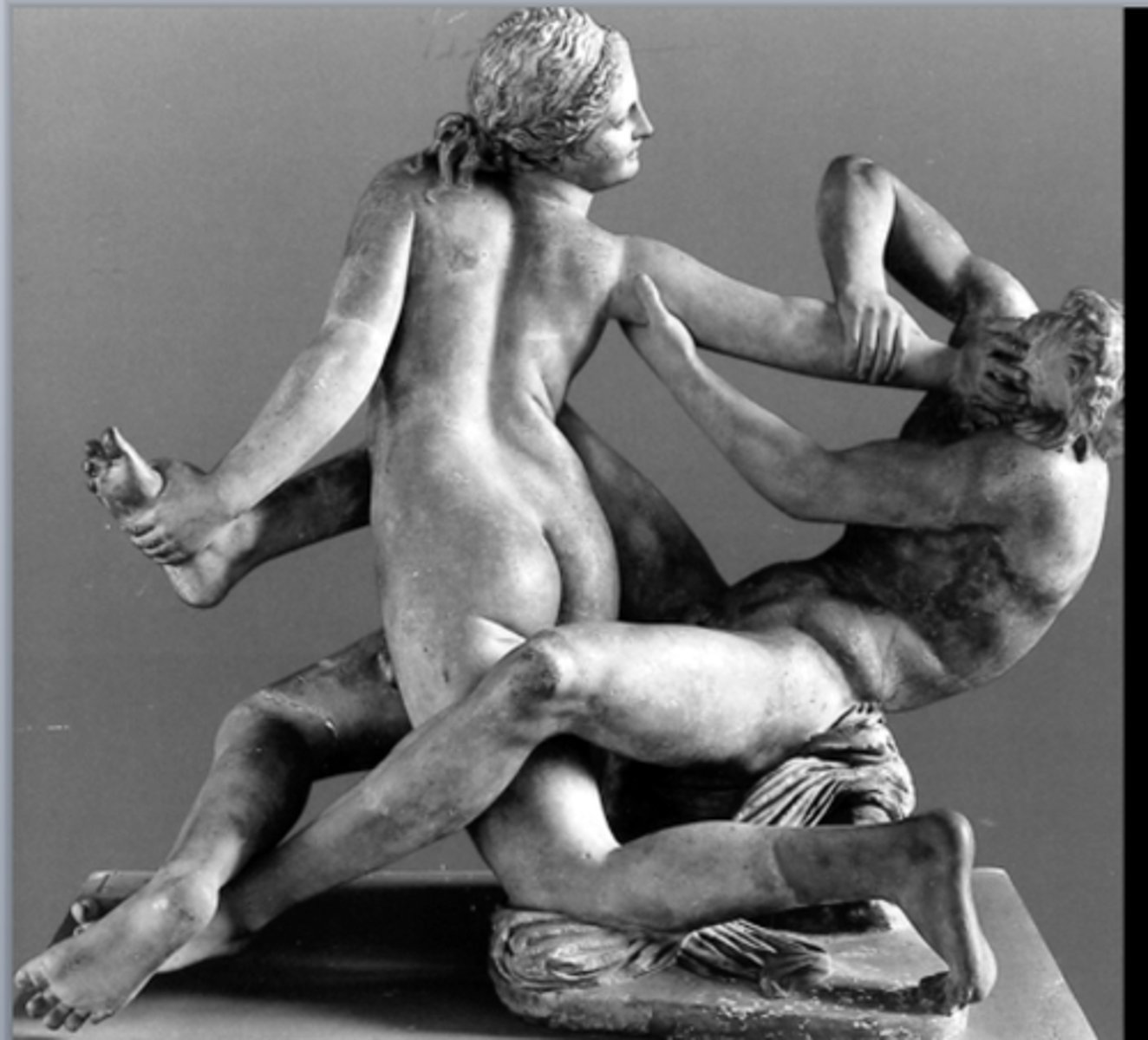
Faun Barberini
- 220 bce (high hellenistic pd)
- from Pergamon ??
- by Giuseppe Giorgetti ??
- depicts a sleeping faun, roman equivalent of the greek satyr
- shows mind at rest & body relaxed
- restored by Bernini in 1600s
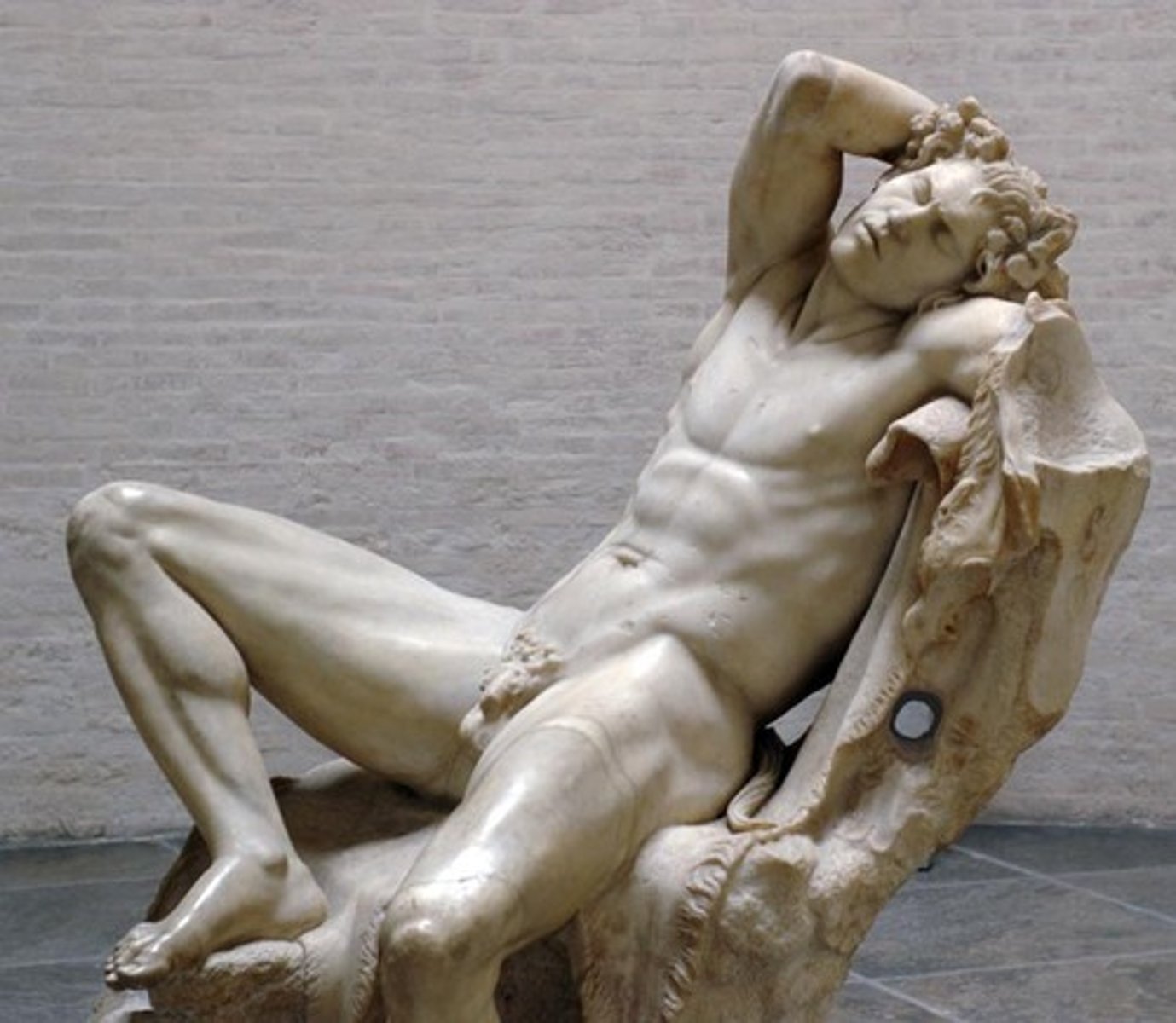
Mount Nemrut
- 50-35 bce (late hellenistic pd)
- in southeastern Turkey (asia minor)
- built by King Antiochus I of Commagene
- summit where a number of large statues are erected around what is assumed to be a royal tomb
- statues include King Antiochus I, two lions, two eagles, and various greek & iranian gods (including herakles, apollo, hermes, and zeus)
- at one point, the heads of the statues were removed and are now placed variously all over the site
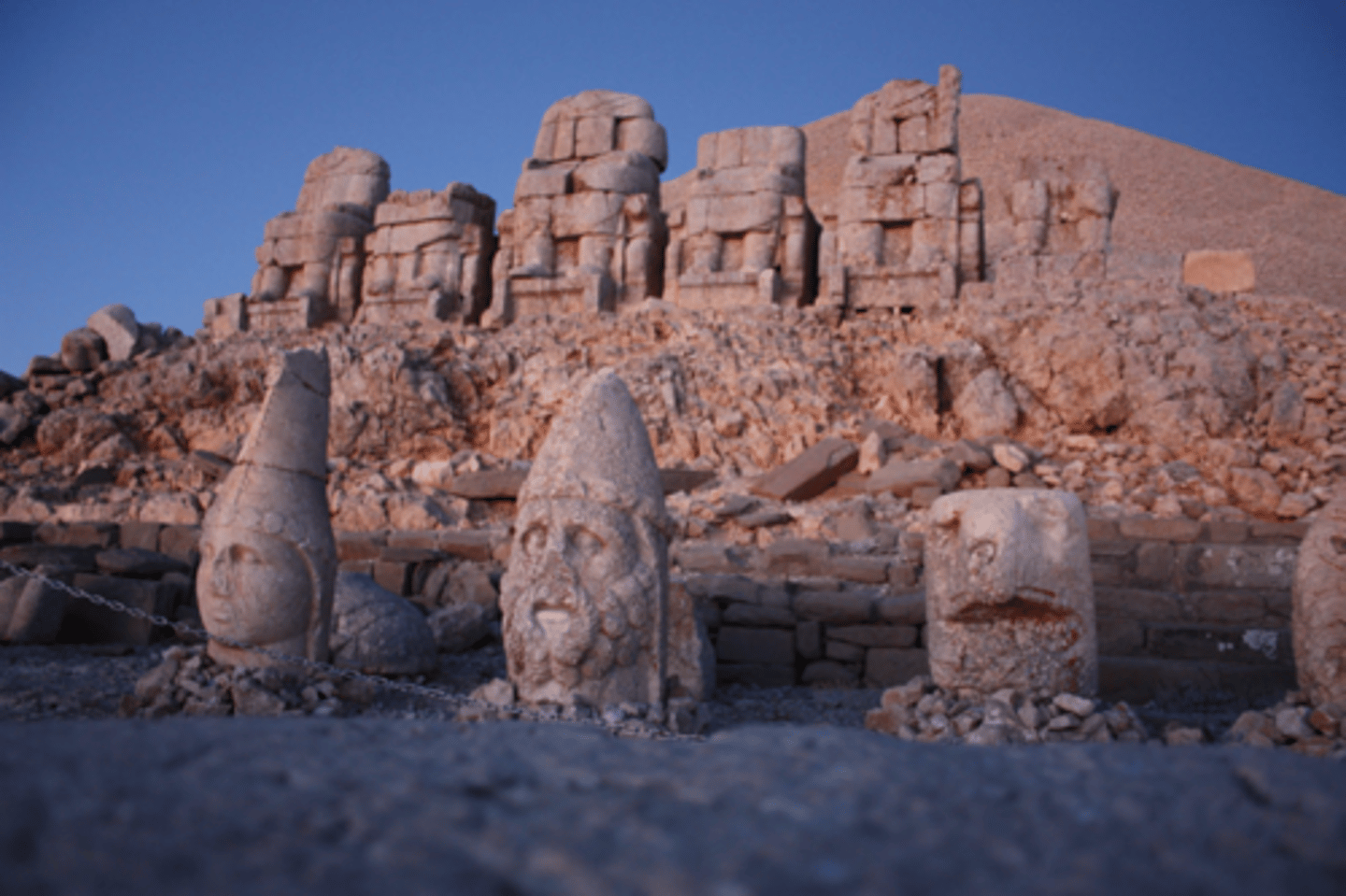
Tyche of Antiocheia
- 290-280 bce (early hellenistic pd)
- by Eutychides (pupil of Lysippos)
- from rome (italy)
- roman copy of bronze original
- full of symbols; female figure represents the wealth and good fortune of Antioch, a city in modern day turkey
- the man beneath her feet represents the Orontes river
